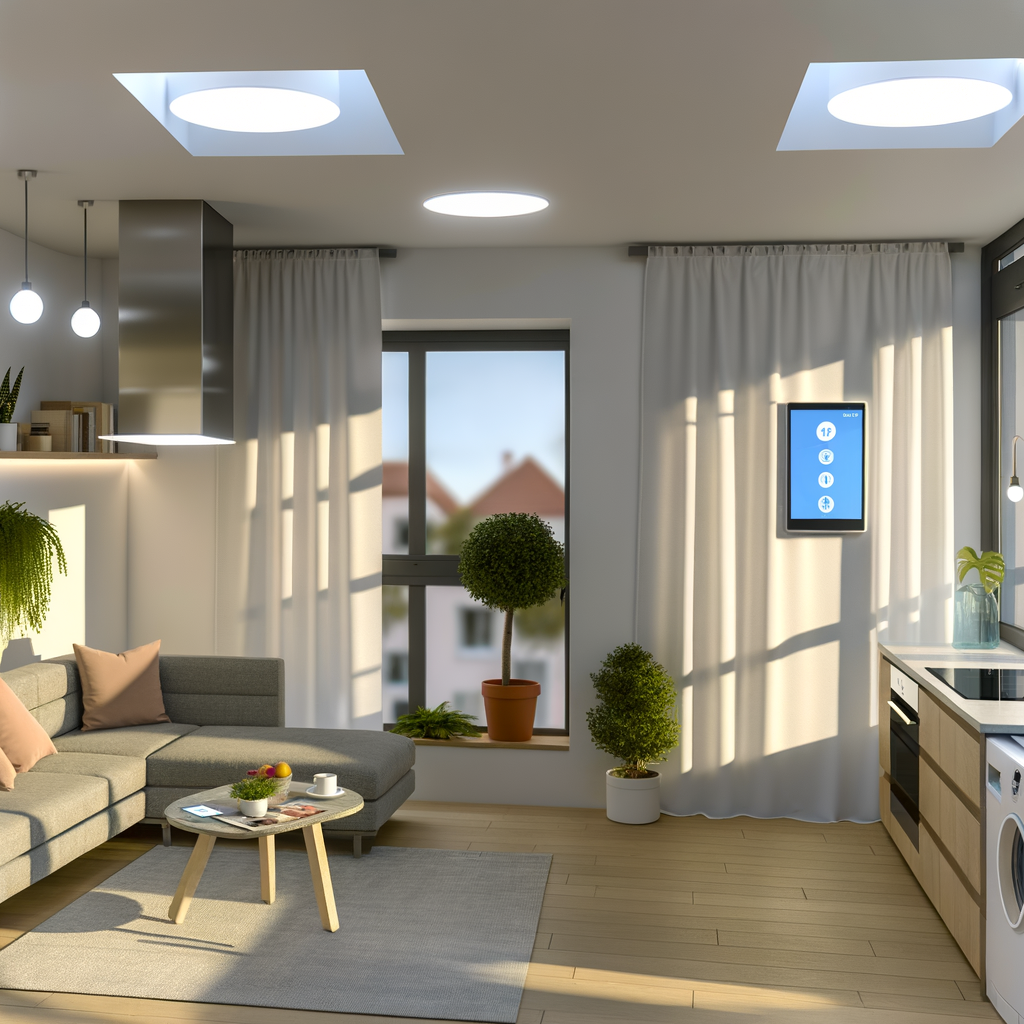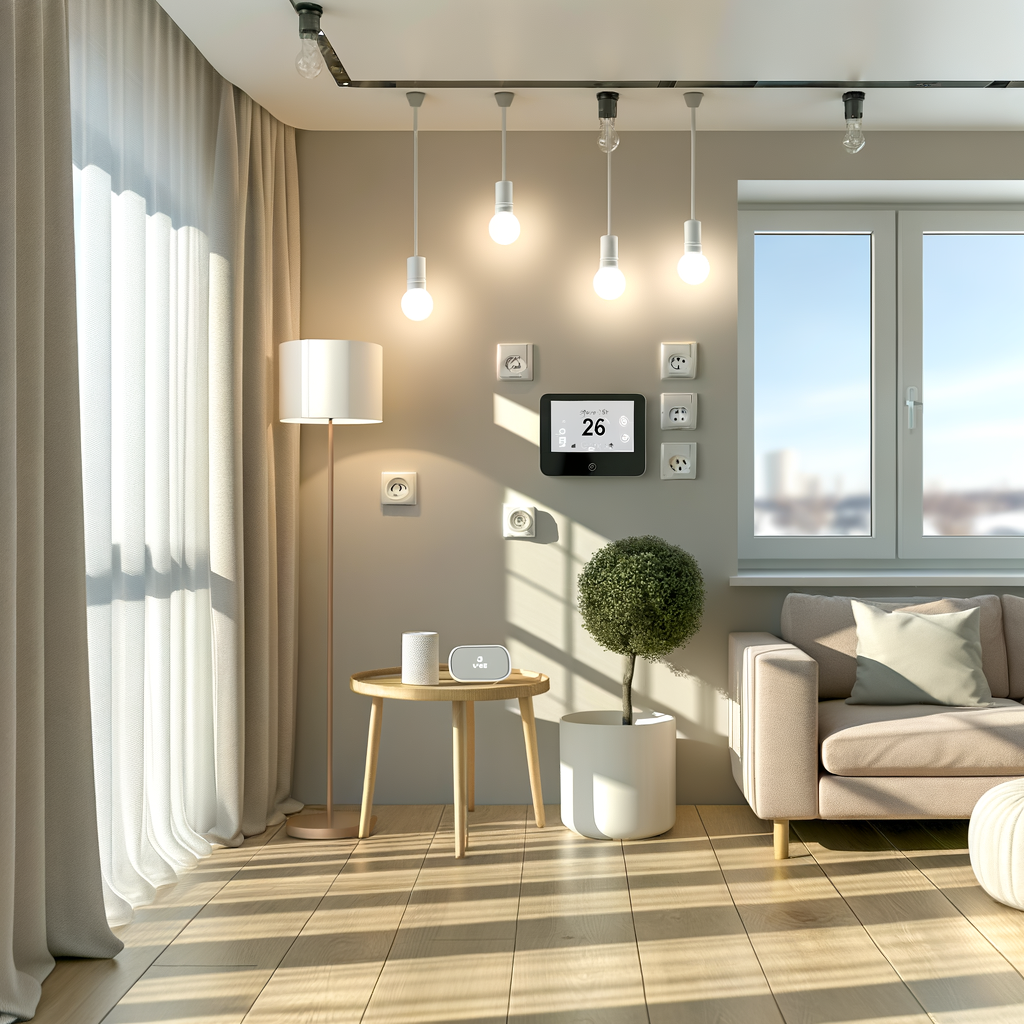How to Create a Smart, Energy-Efficient Apartment on a Budget: A Renter’s Step-by-Step Guide
Renters often believe that designing a smart, energy-efficient apartment is out of reach—either too expensive or not permitted due to strict lease contracts. But the truth is, you don’t need to own your home to make meaningful upgrades. With the right strategy and a little investment, you can lower your bills, shrink your environmental footprint, and still enjoy all the perks of modern, connected living.
This comprehensive guide breaks down affordable, non-invasive ways to make your apartment smarter and more energy-efficient, all while respecting your status as a renter.
Why Prioritize Smart, Energy-Efficient Upgrades as a Renter?
- Lower Utility Costs: Smart devices and energy-saving habits can collectively save you hundreds of dollars a year.
- Reduce Your Carbon Footprint: Making smarter energy choices helps combat climate change.
- Modern Comfort: Automate chores, improve comfort, and gain peace of mind with smarter tech.
- Easy to Take With You: Most upgrades are portable—move them to your next home when you relocate.
Step 1: Assess Your Apartment’s Needs and Opportunities
Start with a DIY Energy Audit
Before you upgrade, identify where you’re wasting energy and what you can realistically change.
- Check windows and doors for drafts—use your hand to feel for air leakage.
- Identify “vampire” appliances—devices that draw power even when switched off (like TVs, game consoles, and microwaves).
- Review your lighting—are old incandescent bulbs still in use?
- Feel your water heater (if accessible)—is it set at a scalding-hot temperature?
Prioritize Non-Permanent Upgrades
Many effective strategies require no drilling, wiring changes, or landlord approval. Focus on plug-and-play tools, easy swaps, and reversible modifications.
Step 2: Make Your Lighting Smart and Efficient
Switch to LED Bulbs
- LEDs use up to 90% less energy than incandescent bulbs and last 10-25x longer.
- Swap bulbs in lamps and fixtures you use most—like those in the living room and kitchen.
- Choose warm or cool color temperatures to suit your space.
Add Smart Lighting Features
- Smart bulbs: Replace standard bulbs with WiFi- or Bluetooth-enabled LED smart bulbs you control from your phone or with your voice.
- Smart plugs: Use smart plugs for lamps you can’t swap out—schedule lamps to turn off automatically or control them remotely.
- Motion sensors: Add stick-on battery-powered sensors to closets, entryways, or bathrooms—lights turn on when you enter, saving energy.
Tip for Renters: Choosing bulbs and plugs that don’t require a hardwired hub lets you easily take them with you when you move.
Step 3: Control Temperature Without Major Upgrades
Install a Portable Smart Thermostat (if possible)
- If your apartment has a wall-mounted thermostat and your lease allows, swap in a smart thermostat (keep the original for moving out).
- If not, focus on portable solutions like smart AC controllers that work with window units or infrared remotes.
Seal Drafts and Improve Insulation
- Weatherstripping: Add peel-and-stick weatherstripping to gaps around windows and doors.
- Door draft stoppers: Place a weighted fabric draft stopper along the base of doors to prevent air leaks.
- Thermal curtains: Hang thermal or blackout curtains for insulation and light control. They keep heat out in summer and cold out in winter.
Use Smart Fans and Heaters
- Plug space heaters or fans into smart plugs to schedule operation or use voice commands for on-demand comfort.
- Always follow safety guidelines—never leave portable heaters unattended.
Step 4: Plug into Smart, Eco-Friendly Power Management
Eliminate Vampire Power with Smart Power Strips
- Plug TVs, gaming systems, and other electronics that draw standby power into a smart or advanced power strip.
- Set schedules or use remote control to fully power down devices overnight or when you’re away.
- Some smart strips can sense when a device (like a TV) turns off and automatically cut power to associated peripherals.
Monitor Energy Use
- Add a home energy monitor (plug-in or WiFi) to track usage in real time from your phone.
- Identify and replace “energy hog” devices with more efficient models if possible.
Step 5: Upgrade Appliances the Renter-Friendly Way
Choose Portable, Efficient Alternatives
- Air purifiers: Select an Energy Star-rated air purifier for clean, efficient air—portable and takes only a wall outlet.
- Portable washing machines: For studios or those without in-unit laundry, opt for an energy-efficient mini washer that connects to your sink and stores away easily.
- Induction cooktops: If your kitchen range is an ancient energy sucker, consider a plug-in induction cooktop for quick, efficient meals.
Run Appliances Efficiently
- Only run dishwashers and washing machines with full loads.
- Air-dry clothes when possible. Use a folding drying rack to save both space and energy.
- Unplug small kitchen appliances when not in use.
Step 6: Optimize Water Use and Efficiency
Install Low-Flow Fixtures
- Most landlords allow easy swap showerheads and faucet aerators as long as you keep the originals and reinstall them when you move out.
- Low-flow showerheads can cut water use by up to 50%—saving you on both water and the energy used to heat it.
Fix Leaks Promptly
- Report dripping faucets, running toilets, and leaky pipes to management right away—wasted water is wasted money and bad for the environment.
Step 7: Add Smart Home Convenience—On a Budget
Smart Assistants and Hubs
- Start with a voice assistant speaker (like Amazon Echo or Google Nest Mini) for hands-free control of lights, plugs, and music.
Smart Security Without Drilling
- Wireless cameras: Indoor cameras, video doorbells with adhesive mounts, and smart sensors offer peace of mind—most install with no screws required.
- Smart locks: Some smart lock models slip over your existing deadbolt, letting you use an app or keypad without replacing the lock and violating lease terms.
Automation on a Budget
- Use IFTTT, Alexa, or Google Home routines to create basic automation: lights on at sunset, fan off at bedtime, etc.
- Set up scenes for movie nights, bedtime, or “away mode” to adjust multiple devices with one command.
Step 8: Develop Eco-Friendly Habits
No amount of smart tech beats good habits. Combine gadget upgrades with mindful routines for maximum gain.
- Set timers: Use your smart assistant or phone to remind you to turn off lights or unplug devices.
- Layer up or cool down naturally: Put on a sweater before reaching for the heater; use fans strategically instead of cranking the AC.
- Turn off the tap:




